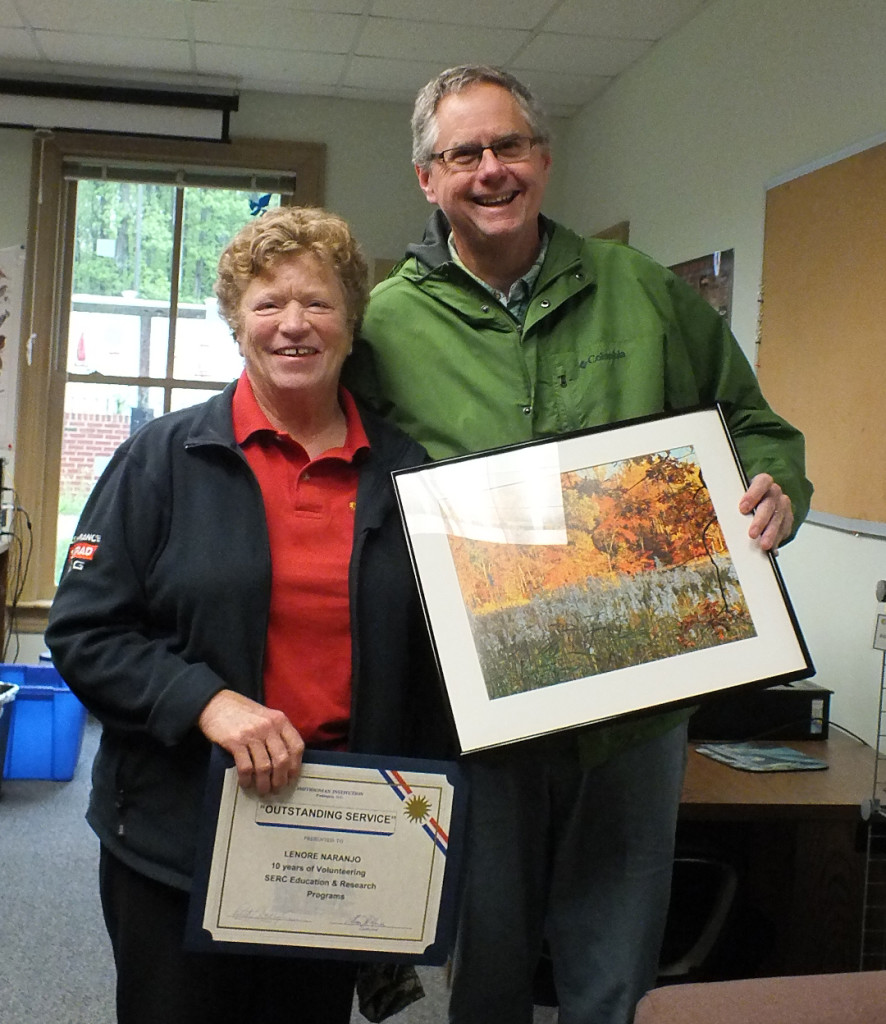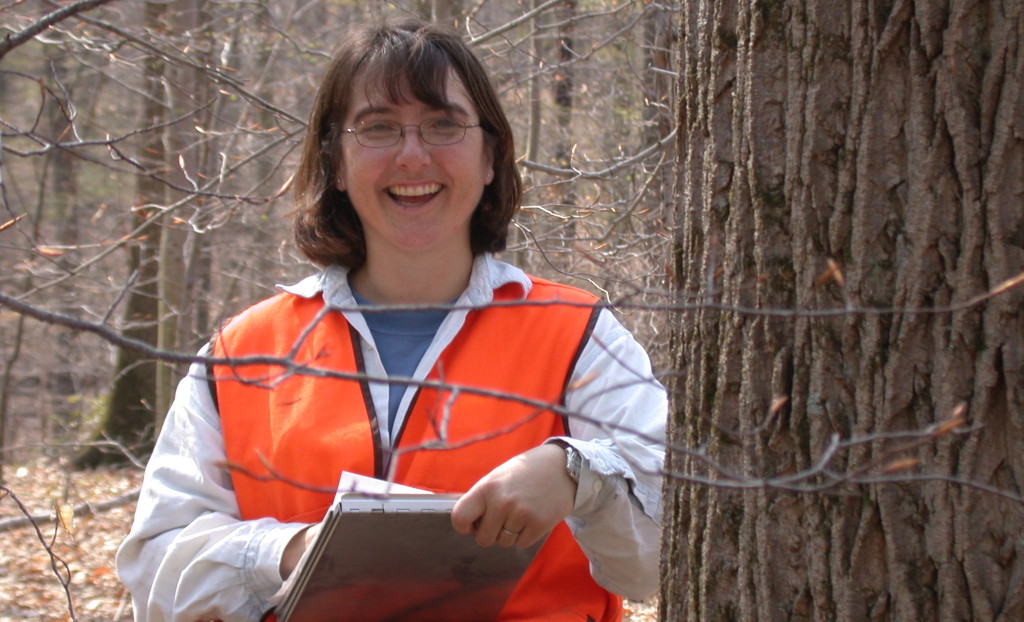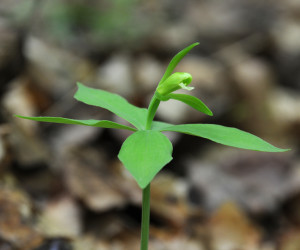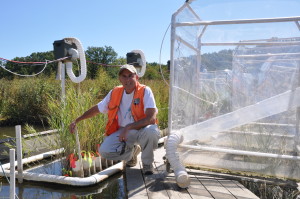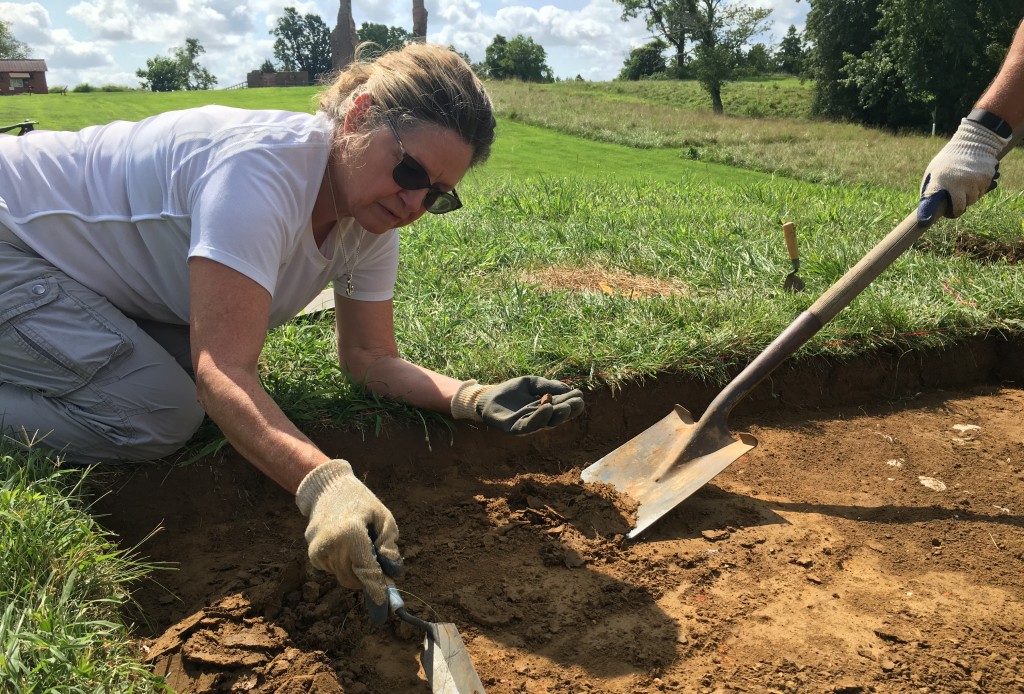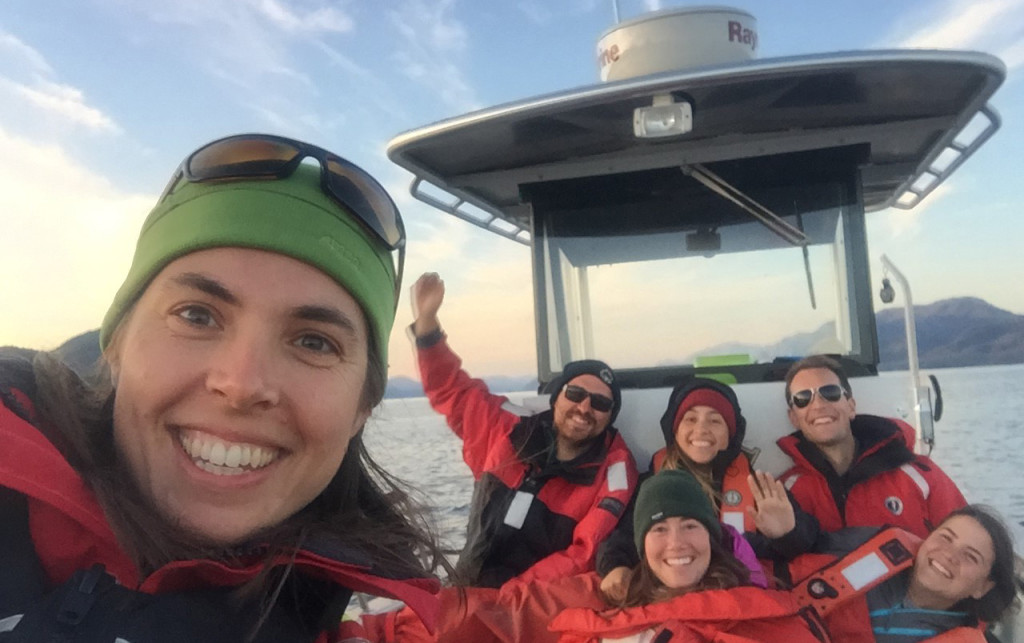by Ryan Greene
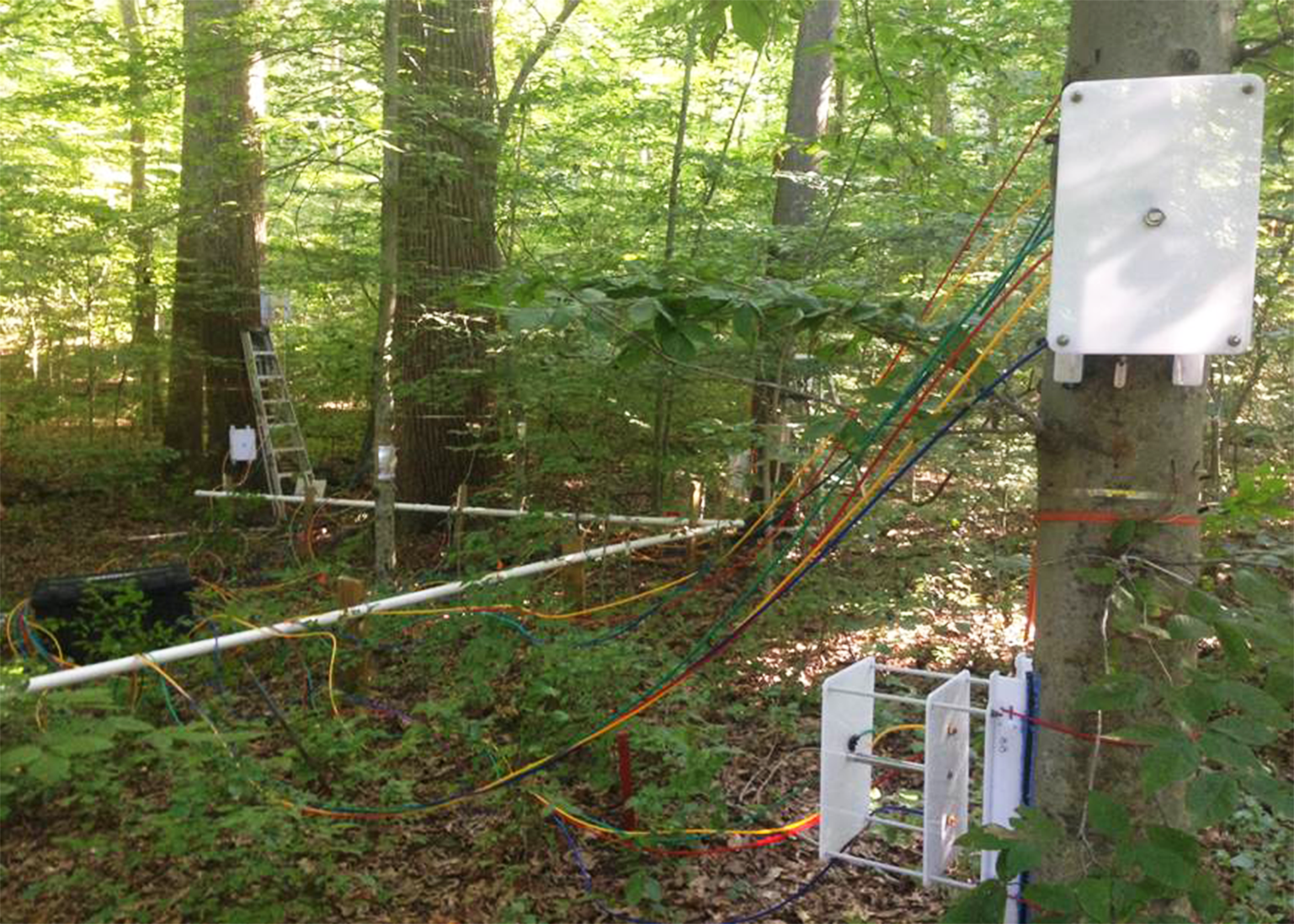
Methane flux chambers keep track of how much methane a tree trunk releases or consumes. Credit: Pat Megonigal/SERC
Rainbow-colored tubes snake through the undergrowth. White acrylic chambers sit mounted to tree trunks like giant bleached snails. At first glance, it’s not quite clear what the heck is going on. Cryptic as it may seem, these tubes and chambers are the key to a recent study showing that trees in upland forests are capable of emitting the planet-warming greenhouse gas, methane.
Scientists have long considered upland forests to be methane sinks due to the presence of methane-hungry microbes called methanotrophs in their soils. But new research by Pat Megonigal, an ecosystem ecologist who heads up the Biogeochemistry Lab at the Smithsonian Environmental Research Center (SERC), and Scott Pitz, a graduate student from Johns Hopkins, has shown that when it comes to upland forest methane cycling, soil isn’t the only game in town. Trees and their emissions are part of the equation too.
In a recently published study in New Phytologist, Megonigal and Pitz found that trees in upland forests are actually capable of emitting methane through their trunks. This means that some of the methane absorbed by methanotrophs in the forest soils may be offset by tree emissions.
Why, though, does any of this even matter?
When researchers think about global climate change, they need to think about heat-trapping greenhouse gases like carbon dioxide (CO2) and methane (CH4). Specifically, they’ve got to track these gases to see where they’re coming from (their sources) and where they’re getting stored (their sinks). Carbon dioxide receives much of the spotlight (and rightfully so, given its enormous impact on the global climate), but it’s also critical to keep an eye on methane. Although methane stays in the atmosphere for far less time than carbon dioxide, it’s capable of trapping up to 45 times more heat. In other words, methane is a big deal. If temperate forests are consuming less of it than we thought, as Megonigal and Pitz’s research suggests, that could be a big deal too. Click to continue »


